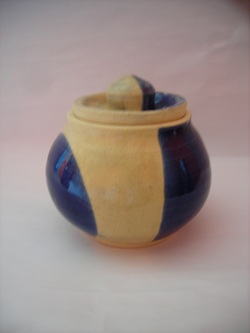
Many pojects use glaze to create unity between two peices of a project. This is a 4" by 3" lidded project. It has a large belly. The know on the lid is very think. The project is half glazed in cobalt blue and half in clear. The project was dipped in cobalt blue on the clear half, creating an oval. The lid is also dipped half in each color. The clear is very thin, so the texture of the clay can be felt if touched. The connection of the colors between the lid and the vase, unify the project as one.
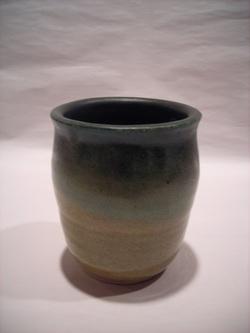
Many artists uses transition of glaze color and surface texture to create movement in their projects. This is a 3 1/2" by 3" vase. There is a slight belly toward the top of the project. It is glazed in mystery and turquoise. The inside and a bit down the belly is glazed turquoise. From the bottom of the lip to the base of the project is mystery. Because the turquoise is a mat glaze, the tecture from the turquoise to the mystery gradually changes from dull to smooth. The shift in the texture creates a subtle movement in the project.
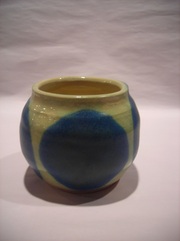
Many artists glaze projects to show off a certain shape. This is a 8 1/2" by 8" wheel altered vase. It is short and wide. It has a wide belly, giving it a sphere shape. The lip does not flare out. The vase has been altered by squishing in the sides. This turns the sphere into a more square shape on the body of the project. The vase was dipped, first, in clear. Then, on each altered side, it was quickly dipped in turquoise to create the circles on each side. The glaze emphasizes the part of the project that has been altered to enhance the new shape.
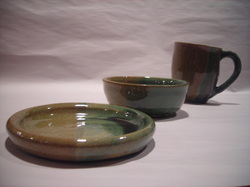
Artists often use glazes to unify projects in a set. This is a set of three projects, including a cup, a bowl, and a plate. All three peices are small. They are all dipped half in shadow green and half in mystery. The glazes combine the three seperate projects into a dining set.
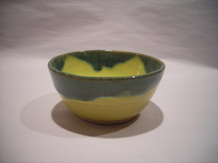
Many artists use patterns when glazing to create movement in their projects. This is a 4" by 1 3/4" bowl. The sides and base are a little thick. The sides are not pulled out as far as most bowls. There are a few spots where the glaze is thick and makes a bump on the bowl. The bottom of the bowl has a thin layer of yellow. The lip is glazed in shadow green. The shadow green glaze drips down the sides, creating a feeling of movement.
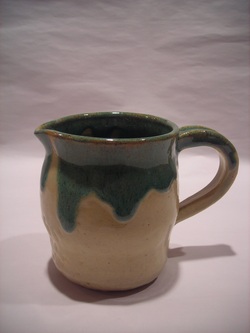
Glazes are often used to emphasize the function of a project. This is a 3 3/4" by 3 1/4" pitcher. It is relatively small and has a flat bottom because it could not be footed. THe handle is very heart shaped. The picther has a slight belly. The inside, the lip, and part of the handle are glazed in shadow green. The rest is glazed clear. There are various spots where the glaze was too thick and "crawled." The way the glaze "pours" down the side emphasizes the pitchers job of pouring.






 RSS Feed
RSS Feed